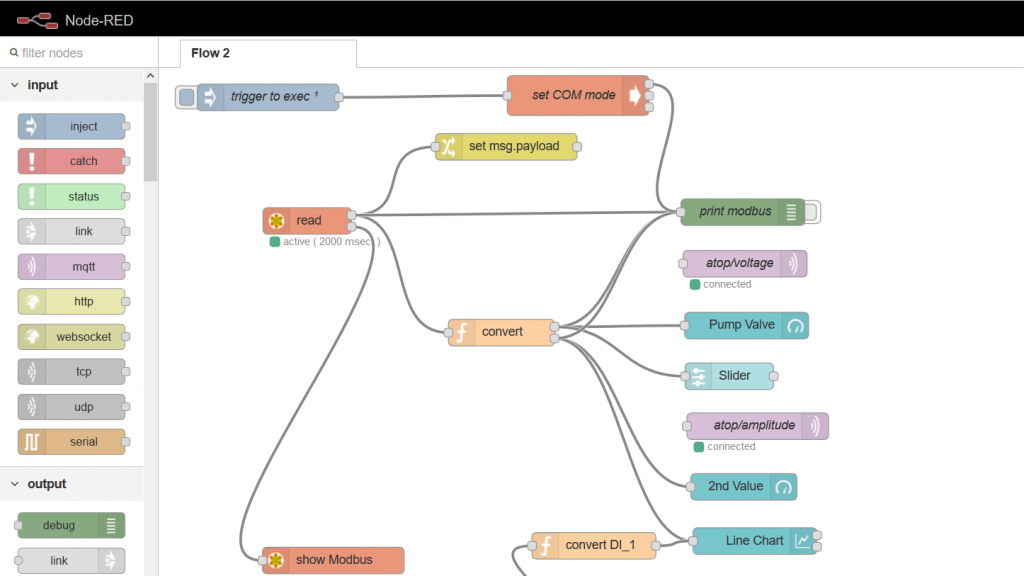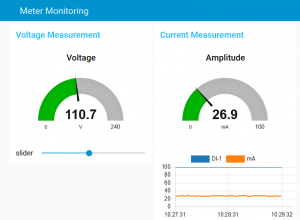3G/4G LTE Cellular to Ethernet and Serial Secure Embedded Edge Computer
* test carried out with one VPN-IPsec Tunnel, Peer-to-Peer mode, Ethernet cable.
Providing connectivity for the Internet of Things
ATOP’s Industrial Embedded Computer is your ideal flexible Gateway to the Internet of Things. It provides 3G/4G LTE, Serial, Ethernet and Cellular connectivity and additional I/Os and interfaces that can unlock your potential. Based on your specific application, it allows almost any serial device to be connected, providing and retrieving the data you need to and from the cloud, no matter what provider you’re using.
Programmability
Write your customized application in C language and run it on its powerful Industrial low-power 800MHz ARM Cortex A8 TI Sitara AM3354 CPU. Make flexible use of your peripherals, no matter storage, SMS, Serial, I/Os and USB are needed.
SE5901B is available as a Standard SDK or Node-RED version.
The Node-RED version, embedding a Node-RED micro-SD card, adds to the powerful hardware platform, the possibility add the ATOP-Customized Node-RED environment and an user-friendly Device Configuration UI. Node-RED, an open source Building-Block programming environment, will allow you to build your IoT application from an user-friendly, hardware-tailored application design environment and dashboard.
Rugged and flexible for advanced developments
SE5901B embeds high EMC protection, wide temperature operation, programming and installation flexibility in one device. A dedicated I/O version provides 2 Digital Inputs and 2 Digital Outputs, GPS version provides Global positioning system geolocation and, specifically for the Internet of Things, a “B” version provides additional 15 seconds power during a power failure, allowing the device to relay back to the host the failure. This is Industry 4.0.
| MODEL NAME | CELLULAR | SERIAL PORTS | I/O | OTHER |
|---|---|---|---|---|
| SE5901B-D3G-US (SDK) or -NR (Node-RED) | 3G (US) | 1 (DB9) | - | - |
| SE5901B-IO-D3G-US (SDK) or -NR (Node-RED) | 3G (US) | 1 RS232/485 +1 RS232 (TB14) | 2/2 | |
| SE5901B-IO-D3G-GPS-US (SDK) or -NR (Node-RED) | 3G (US) | 1 RS232/485 +1 RS232 (TB14) | 2/2 | GPS |
| SE5901B-4G-US (SDK) or -NR (Node-RED) | 4G (US) | 1 (DB9) | ||
| SE5901B-IO-4G-US (SDK) or -NR (Node-RED) | 4G (US) | 1 RS232/485 +1 RS232 (TB14) | 2/2 | |
| SE5901B-IO-4G-GPS-US (SDK) or -NR (Node-RED) | 4G (US) | 1 RS232/485 +1 RS232 (TB14) | 2/2 | GPS |
| SE5901B-4G-B-US (SDK) or -NR (Node-RED) | 4G (US) | 1 (DB9) | Battery | |
| SE5901B-IO-4G-B-US (SDK) or -NR (Node-RED) | 4G (US) | 1 RS232/485 +1 RS232 (TB14) | 2/2 | Battery |
| SE5901B-IO-4G-GPS-B-US (SDK) or -NR (Node-RED) | 4G (US) | 1 RS232/485 +1 RS232 (TB14) | 2/2 | GPS - Battery |
| SE5901B-D3G-EU (SDK) or -NR (Node-RED) | 3G (EU) | 1 (DB9) | ||
| SE5901B-IO-D3G-EU (SDK) or -NR (Node-RED) | 3G (EU) | 1 RS232/485 +1 RS232 (TB14) | 2/2 | |
| SE5901B-IO-D3G-GPS-EU (SDK) or -NR (Node-RED) | 3G (EU) | 1 RS232/485 +1 RS232 (TB14) | 2/2 | GPS |
| SE5901B-4G-EU (SDK) or -NR (Node-RED) | 4G (EU) | 1 (DB9) | ||
| SE5901B-IO-4G-EU (SDK) or -NR (Node-RED) | 4G (EU) | 1 RS232/485 +1 RS232 (TB14) | 2/2 | |
| SE5901B-IO-4G-GPS-EU (SDK) or -NR (Node-RED) | 4G (EU) | 1 RS232/485 +1 RS232 (TB14) | 2/2 | GPS |
| SE5901B-4G-B-EU (SDK) or -NR (Node-RED) | 4G (EU) | 1 (DB9) | Battery | |
| SE5901B-IO-4G-B-EU (SDK) or -NR (Node-RED) | 4G (EU) | 1 RS232/485 +1 RS232 (TB14) | 2/2 | Battery |
| SE5901B-IO-4G-GPS-B-EU or -NR (Node-RED)(SDK) | 4G (EU) | 1 RS232/485 +1 RS232 (TB14) | 2/2 | GPS - Battery |
| SE5901B-DB (SDK) or -NR (Node-RED) | - | 1 (DB9) | ||
| SE5901B-IO (SDK) or -NR (Node-RED) | - | 1 RS232/485 +1 RS232 (TB14) | 2/2 | |
| SE5901B-IO-B (SDK) or -NR (Node-RED) | - | 1 RS232/485 +1 RS232 (TB14) | 2/2 | Battery |
SE5901B (SDK) block diagram
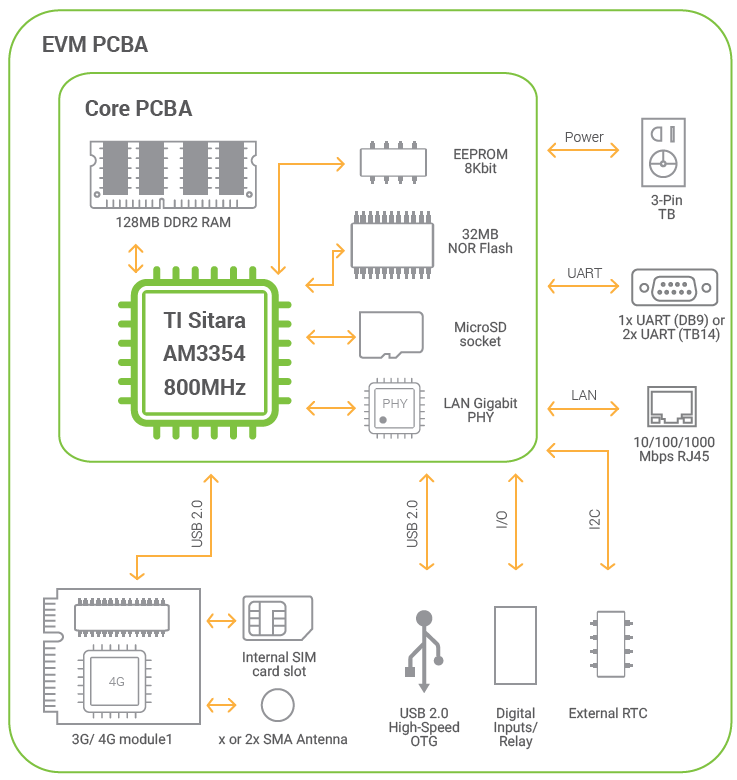
Application
The IoT (Internet of Things) or IIoT (Industrial Internet of Things) is a trending topic these days. It’s all about bringing devices, sensors, actuators, data and commands to the cloud, with the ultimate goal to improve the quality of life, the services Smart Cities can offer, saving energy or saving money. This requires two things: to vehiculate the collected data to the cloud in a format that can be recognized and processed and to process, compute and analyze all this amount of data in real time.
It is not a concept far from reality. Imagine you’d like to bridge a Modbus Sensor to the cloud. And you’d like to have the application running on the cloud to be able to process multiple sensors’ data, and to trigger some event in some specific stations along the network. You may also have the need to override the cloud control and manage the application locally. Any application has its story.
Here at ATOP, we understand these different needs and we are providing you different working models, based on what your needs are.
Use the Standard SDK, programmable embedded computer if:
Our SDK products provide:
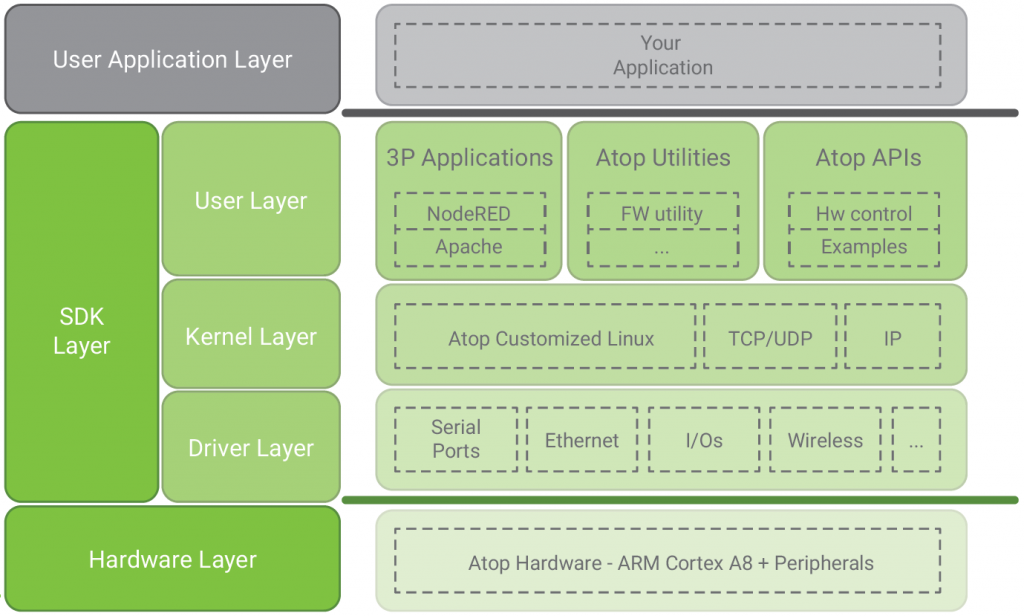
Use ATOP’s Node-RED version with the embedded Micro-SD card if:
Our NodeRED Micro SD Card provides:
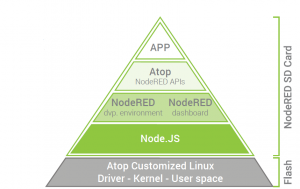
NodeRED development Enrivonment
